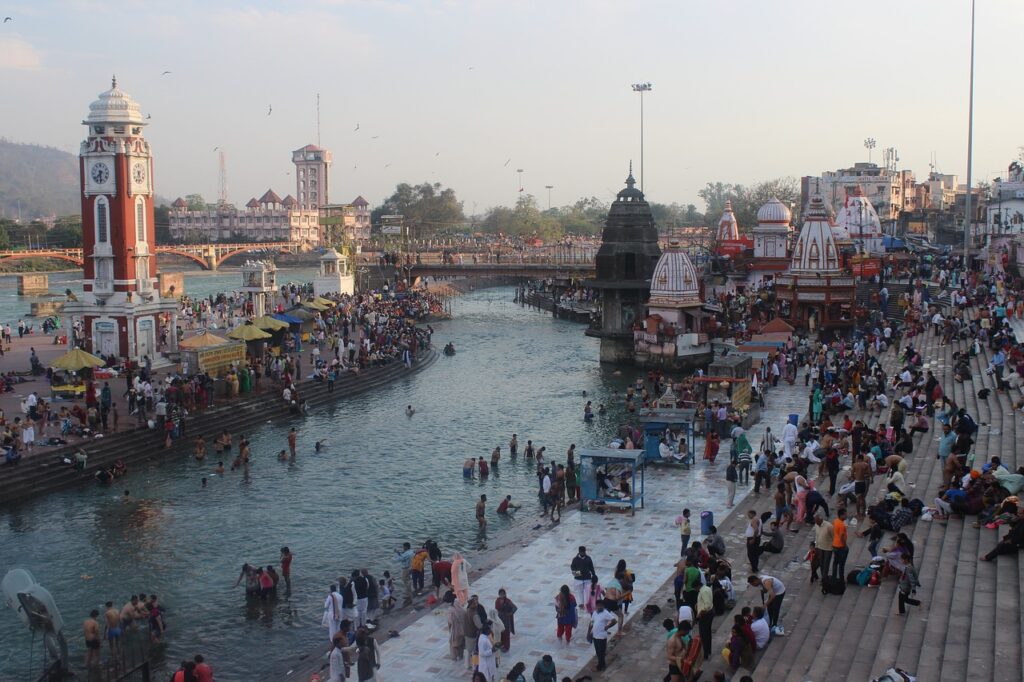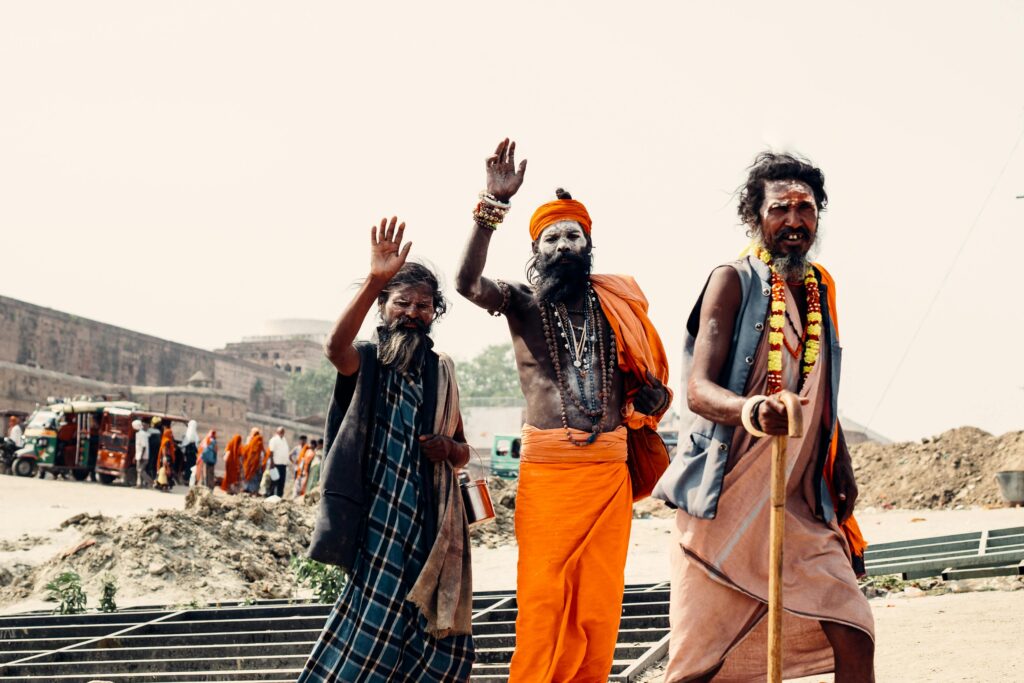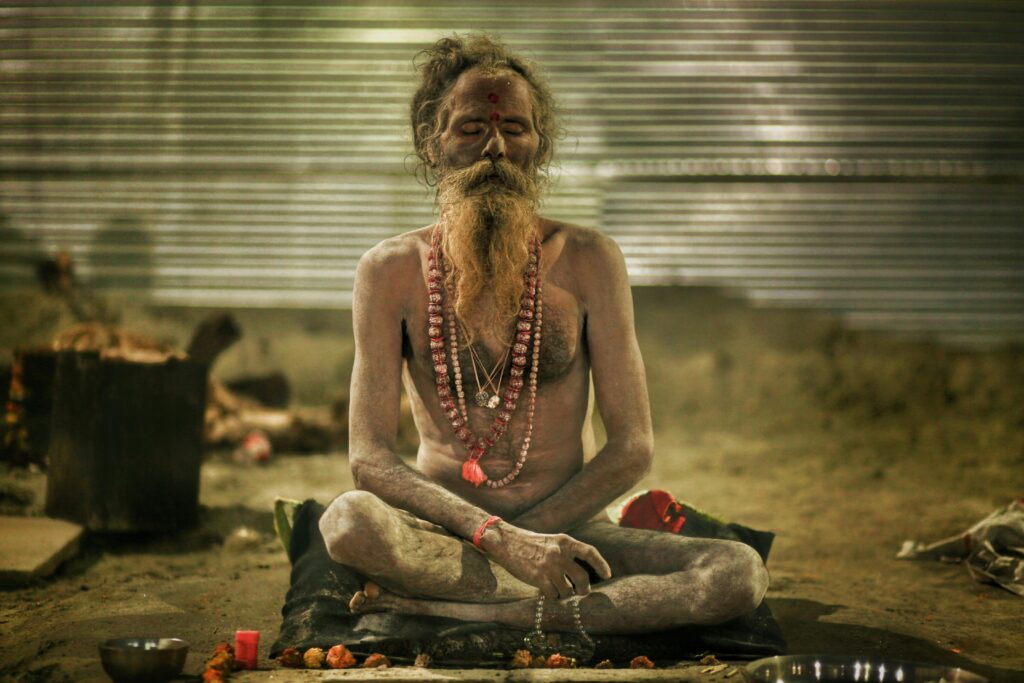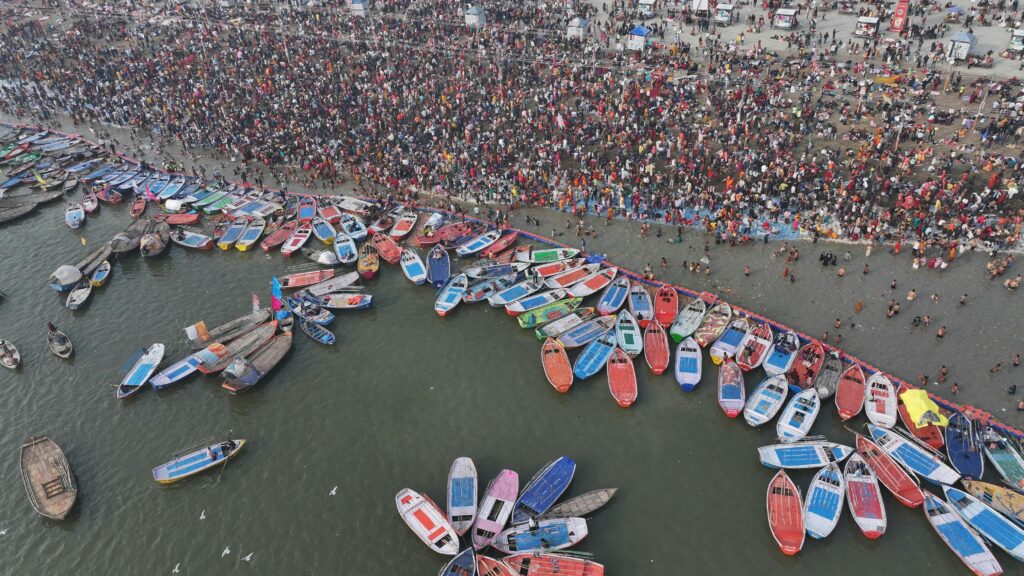Maha Kumbh Mela Festival India
Meaning
The term “Kumbh Mela” translates to “The Festival of the Pitcher” (Kumbh means “pitcher” in Sanskrit). The festival is tied to the mythological story of the amrit manthan (churning of the ocean), where gods and demons fought for a pitcher of nectar (amrit) that would grant immortality. During this cosmic battle, drops of amrit fell at four locations, which are now the sites of the Kumbh Mela: Prayagraj (Allahabad), Haridwar, Ujjain, and Nashik.
Location
The Kumbh Mela rotates between these four sacred cities every 12 years, and a smaller version of the festival, called Ardh Kumbh Mela, is held every 6 years at certain locations.
Timing
The festival happens at different times depending on the zodiac alignment, and the most significant and grand Kumbh Mela takes place in Prayagraj, where it is held every 12 years. It lasts for several weeks, with the most auspicious bathing dates known as the Shahi Snan or “royal bath” when millions of devotees gather to bathe.

Cultural and Religious Significance
Spiritual Cleansing
Taking a dip in the holy rivers of the Kumbh Mela is believed to purify one’s soul, remove past sins, and offer a chance for spiritual liberation (moksha).
Unity and Devotion
People from all over India and across the world come to participate in the festival, regardless of their social or economic backgrounds. It is a celebration of unity, faith, and the shared belief in divine grace.
Rituals
The primary ritual is the holy dip, where devotees bathe in the river to cleanse themselves spiritually. Other rituals include prayers, processions, and the performance of yajnas (sacrificial offerings). The Naga sadhus (ascetics) also play a central role, often marching in processions with much fanfare, as they are believed to be the holiest of devotees.

Spiritual Leaders and Saints
The Kumbh Mela is also a time for spiritual leaders, gurus, and saints to gather, giving teachings and discourses. The festival is often marked by the presence of prominent religious figures, who offer spiritual guidance to the crowd.
Kumbh Mela in Modern Times
While Kumbh Mela has been a religious event for centuries, it has grown to become a cultural and social event as well, attracting pilgrims, tourists, and media from across the globe. The scale of the gathering is mind-boggling, often drawing tens of millions of people (estimates suggest around 120 million people attended the 2013 Prayagraj Kumbh Mela). It is considered one of the largest peaceful gatherings on Earth.

Key Attractions at Kumbh Mela
The Royal Bath (Shahi Snan)
On specific days, the royal bath involves prominent religious leaders and millions of devotees. The “Shahi Snan” is an unforgettable sight, with devotees bathing in the river while saints and ascetics lead the procession.
Processions and Rituals
The festival features grand processions of sadhus (holy men), with the Naga sadhus leading the way in their distinctive attire, which includes being naked or wearing minimal clothing as part of their ascetic lifestyle.
Cultural Exhibitions
Alongside the religious rituals, Kumbh Mela often features cultural performances, discussions, and exhibitions showcasing Indian spirituality, art, and traditions.
Safety and Organization
Given the vast number of people attending, the event requires careful organization to ensure safety and manage crowd control. Authorities set up temporary infrastructure, including toilets, bathing ghats, accommodation, medical facilities, and security measures.
Environmental and Social Impact
While the Kumbh Mela is a deeply spiritual and cultural event, it also faces challenges related to environmental concerns (such as waste management and pollution) and social issues (including overcrowding and the safety of attendees). However, recent efforts have been made to make the festival more eco-friendly by promoting cleanliness and sustainability.

